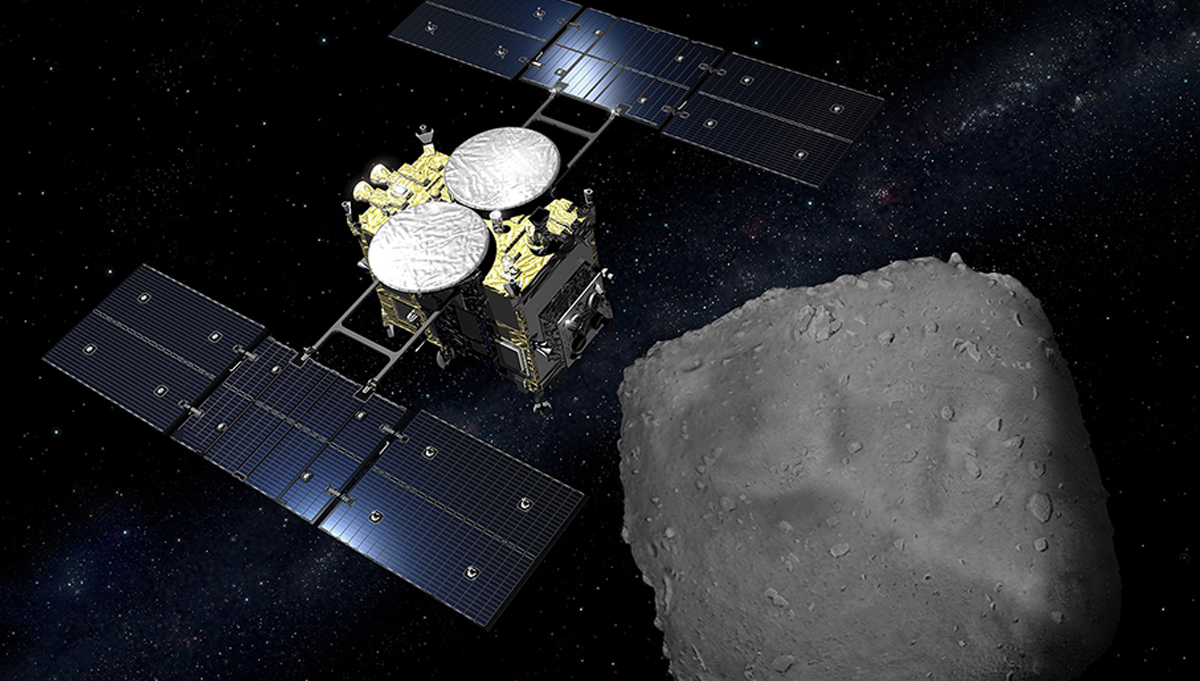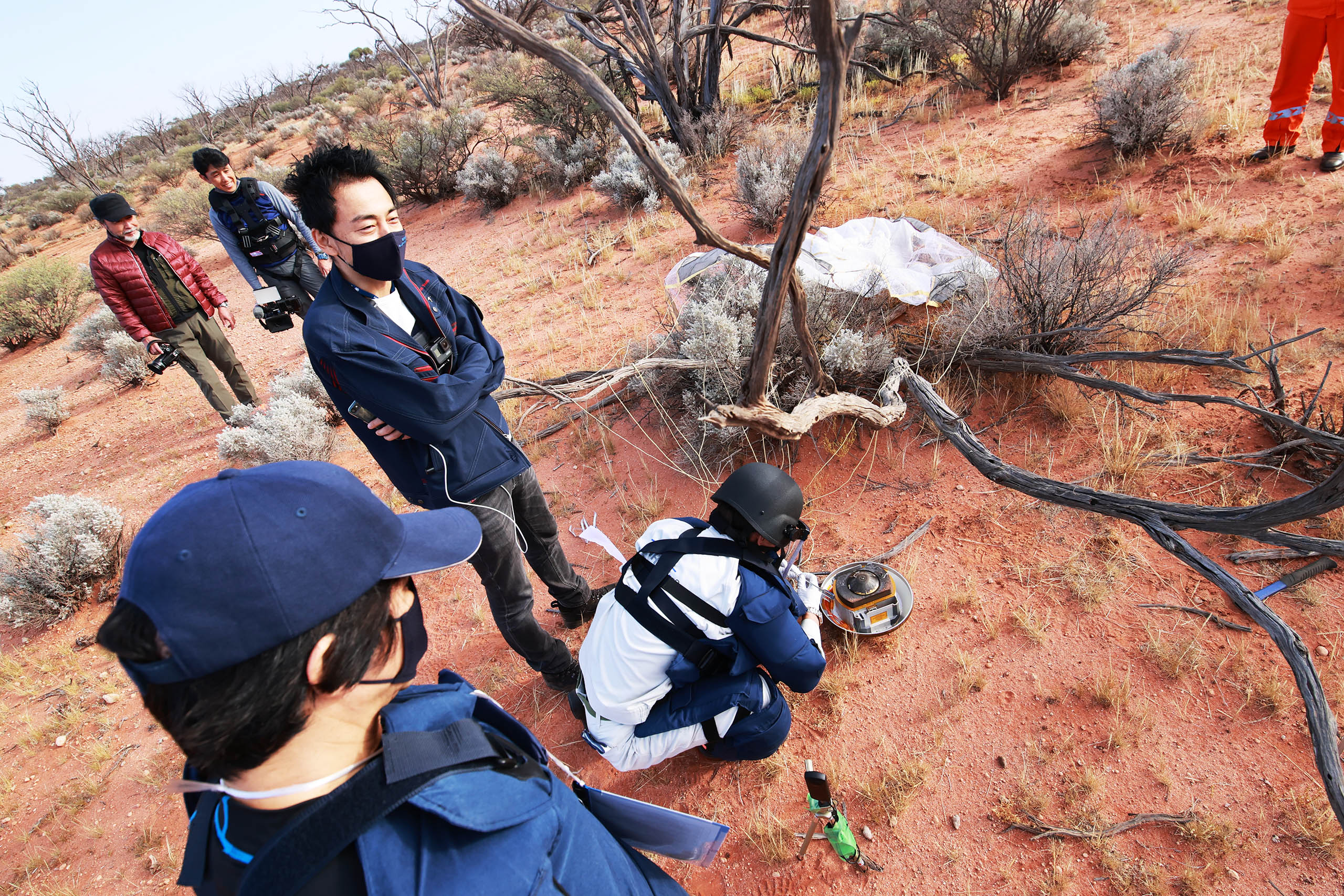Asteroid Ryugu contains material older than the planets, among the most primitive ever studied on Earth
Samples returned to Earth by a Japanese asteroid mission are the most untouched materials ever studied in the solar system.

The asteroid Ryugu contains some of the most primitive material ever studied in a laboratory on Earth, dating back to just 5 million years after the formation of the solar system, according to an analysis of samples retrieved by Japan's Hayabusa2 mission.
Because it is so old, it is made of the same stuff that formed the planets. "Ryugu is one of the building blocks of Earth," team-member Hisayoshi Yurimoto, a professor at Hokkaido University in Japan, told Space.com.
The Japan Aerospace Exploration Agency's Hayabusa2 spacecraft launched in December 2014 and arrived at asteroid Ryugu in 2019. It retrieved two small samples of regolith, amounting to 5.4 grams, from the asteroid. These samples then landed on Earth in a capsule equipped with a parachute in December 2020.
Related: Japan's Hayabusa2 asteroid Ryugu sample-return mission in pictures
Upon their return, the samples were distributed among scientific groups, including one team led by Tetsuya Yokoyama, a professor at the Tokyo Institute of Technology. The team's newly published results suggest that the composition of the samples is the closest match to the solar nebula — the gas cloud that condensed to form the sun and planets — ever found. As such, it is made up of the ingredients that formed the solar system 4.5 billion years ago.
The findings support previous research that also concluded that Ryugu was made of primitive material, but until now it wasn’t known just how old it was.
Ryugu is a carbonaceous chondrite, meaning it is made from carbon-rich stony material. But remote observations by Hayabusa2 found some unexplained discrepancies — including a darker surface color, a larger abundance of phyllosilicate materials and a more porous composition than expected — so laboratory analysis was required to better understand the asteroid's true nature. Ryugu is somewhat similar to the Ivuna meteorite, which fell in Tanzania in 1938 and was loaned by the Natural History Museum in London to Yokoyama's team for their study.
Get the Space.com Newsletter
Breaking space news, the latest updates on rocket launches, skywatching events and more!
"The comparison between Ivuna and Ryugu is very helpful for revealing the characteristics of Ryugu," Yurimoto said.
Utilizing a range of techniques — including electron microscopy, X-ray fluorescence, inductively coupled plasma mass spectrometry and thermal ionization — the team found that the samples had formed within liquid water, at a temperature of about 81 to 117 degrees Fahrenheit (27 to 47 degrees Celsius), roughly 5 million years after the solar system began to form.

With a diameter of just 3,000 feet (900 meters), Ryugu is too small to have generated enough heat to melt water ice. Therefore, Ryugu itself must have originated from a larger parent body that formed just 2 million to 4 million years after the birth of the solar system. At some point after 5 million years, a powerful impact with another asteroid smashed Ryugu's parent body apart, with some of the fragments forming Ryugu. This idea is supported by the presence of large boulders on Ryugu's surface, which appear to have originated as debris from a giant impact.
Ryugu's material can be dated thanks to the abundance of certain elements — hydrogen and noble gases — within the samples. They are the closest match that we have for the composition of the sun's visible surface, the photosphere, which is used as a proxy for the composition of the solar nebula.
No meteoritic or asteroidal material studied in a laboratory on Earth has ever been found to be so primitive and pristine. Some meteorites, like Ivuna, may have once been as pristine. But after lying on Earth for decades, if not centuries — where they were exposed to atmospheric moisture and weathering, and then handled by humans — their mineralogies and elemental composition may have been compromised.
One key question that needs to be answered to fully explain the origin of the planets is where minor bodies, such as asteroids and comets, some of which became planetary building blocks, formed. Their compositions suggest that many of these bodies did not form in their current orbits and that in the chaotic early solar system, with its turbulent protoplanetary disk and migrating planets, the minor bodies were pushed around and moved away from where they formed.
By knowing when Ryugu's parent body formed, and that it contained water, can we say where the asteroid must have formed?
"This is a very difficult question," Yurimoto said. "We have no quantitative answer, but it would be beyond the snow line of the solar system, [which is] located at the orbit of Jupiter." (The snow line is the distance from the sun where water ice could have condensed during the formation of the solar system.)
This is only the beginning of the analysis of the samples brought home by Hayabusa2. The next step is to use the information contained within those samples to determine the abundances of various elements and their isotopes in the early solar system when the planets were forming. According to Yurimoto, once determined, those abundances "would become a new standard for studies of the solar system."
The findings are published in the June 9 issue of the journal Science.
Follow Keith Cooper on Twitter @21stCenturySETI. Follow us on Twitter @Spacedotcom and on Facebook.
Join our Space Forums to keep talking space on the latest missions, night sky and more! And if you have a news tip, correction or comment, let us know at: community@space.com.

Keith Cooper is a freelance science journalist and editor in the United Kingdom, and has a degree in physics and astrophysics from the University of Manchester. He's the author of "The Contact Paradox: Challenging Our Assumptions in the Search for Extraterrestrial Intelligence" (Bloomsbury Sigma, 2020) and has written articles on astronomy, space, physics and astrobiology for a multitude of magazines and websites.









